China: six must-see exhibitions
Chinese artists are placed center stage in shows across Beijing and Shanghai
Log in and subscribe to receive Art Basel Stories directly in your inbox.
For their first exhibitions following the Lunar New Year, galleries in Beijing and Shanghai are shining the spotlight on Chinese artists. Through painting, sculpture, installation, and video, these artists contemplate unique aspects of the human condition – from our relationship with mundane objects to absurd, idealized beauty standards.
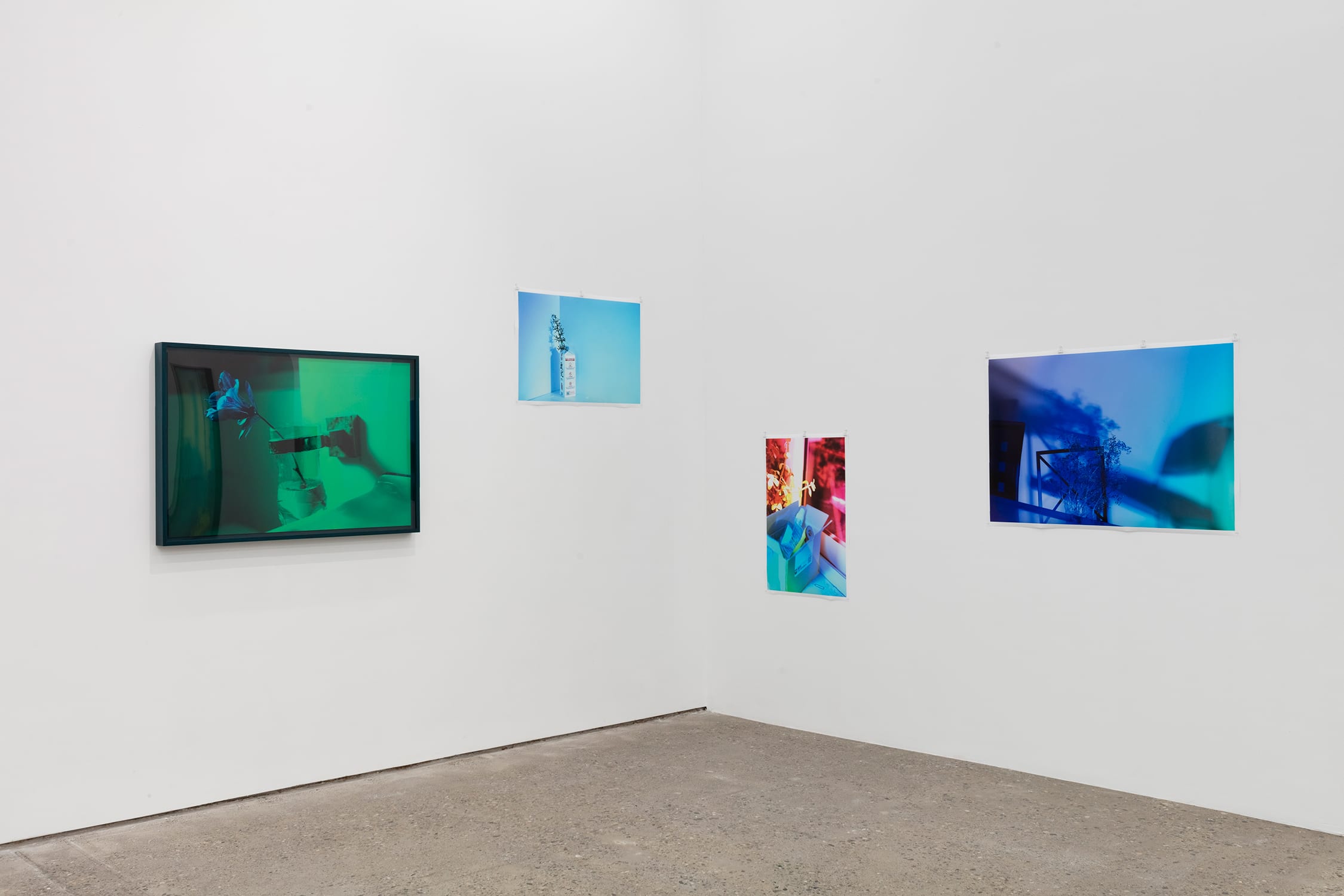
‘Hu Jieming: The Things’
Magician Space, Beijing
Through April 17, 2021
When most people were preoccupied by the gloom of sheltering-in-place due to the global pandemic, Hu Jieming (b. 1957) began his photographic series ‘The Things’ (2020). By zooming in on objects, décor, and views of his home, he transformed his domestic space into a theater stage. He further dramatized the space by digitally manipulating the images’ colors: The yellow of bananas contrasts a living room bathed entirely in turquoise; an ultramarine orchid stands out amongst an otherwise green-hued bathroom. Hu’s renewed fascination with objects from everyday life compel the viewer to reassess their own relationship to materiality, with his photographs acting as prisms refracting a ‘new normal’.
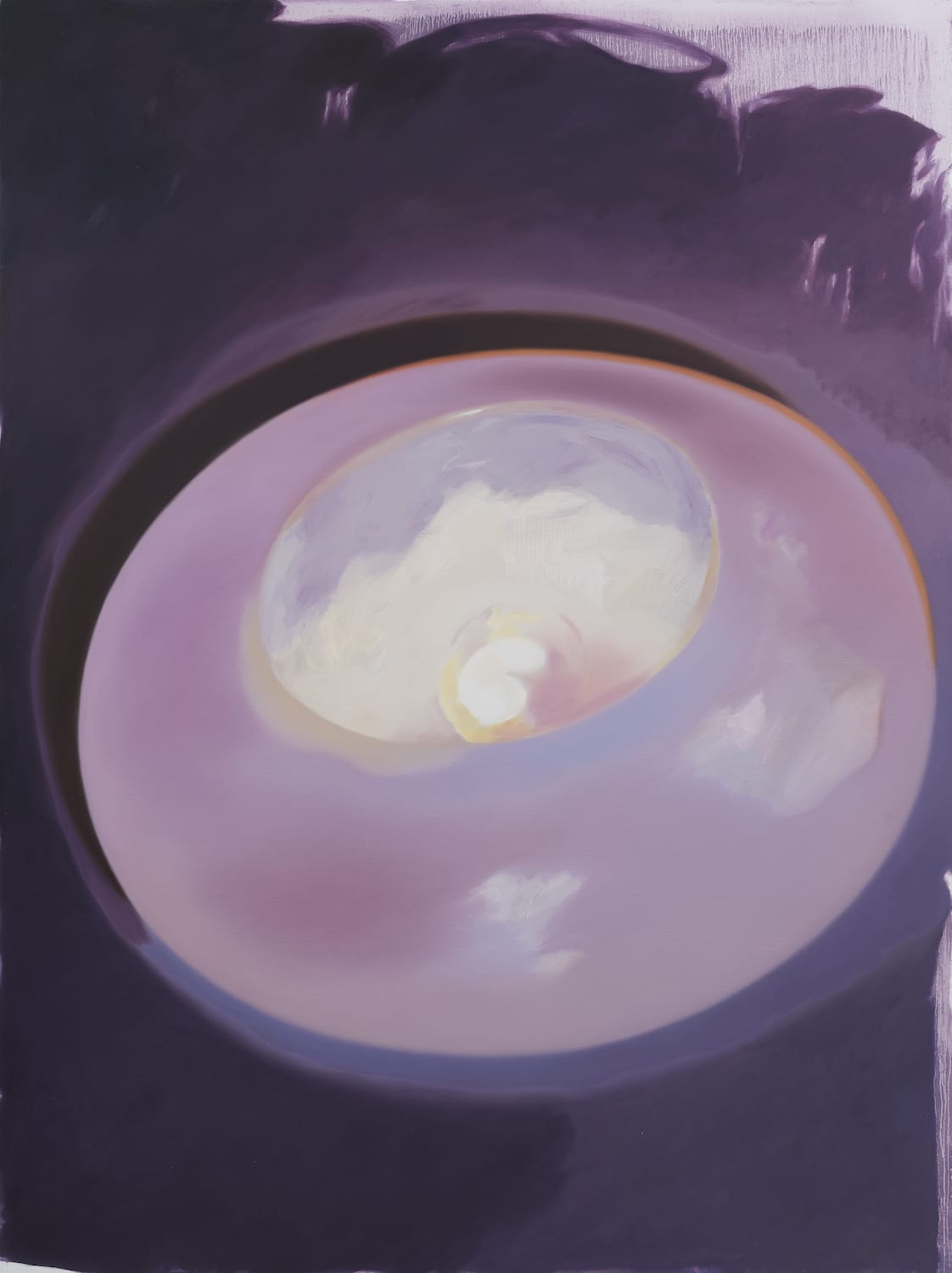
‘Zhu Yingying: Rabbit Hole’
Hunsand Space, Beijing
Through May 2, 2021
Zhu Yingying’s ongoing interest in visual perception is evident in the five new series of paintings on view in this exhibition. Each series focuses on one object or detail from a found photograph but from various angles and points of view. In this painterly meditation, Zhu (b. 1989) often enlarges a certain detail to the point of abstraction. Two paintings from ‘Short Sentences’ (2020), for example, appear like abstract dreamscapes, yet they stem from a photograph of skin lesions caused by exposure to polluted water. Zhu’s paintings instill a sense of hypnagogia, conflating the senses of wakefulness and sleep – just like Alice when she fell down the rabbit hole.
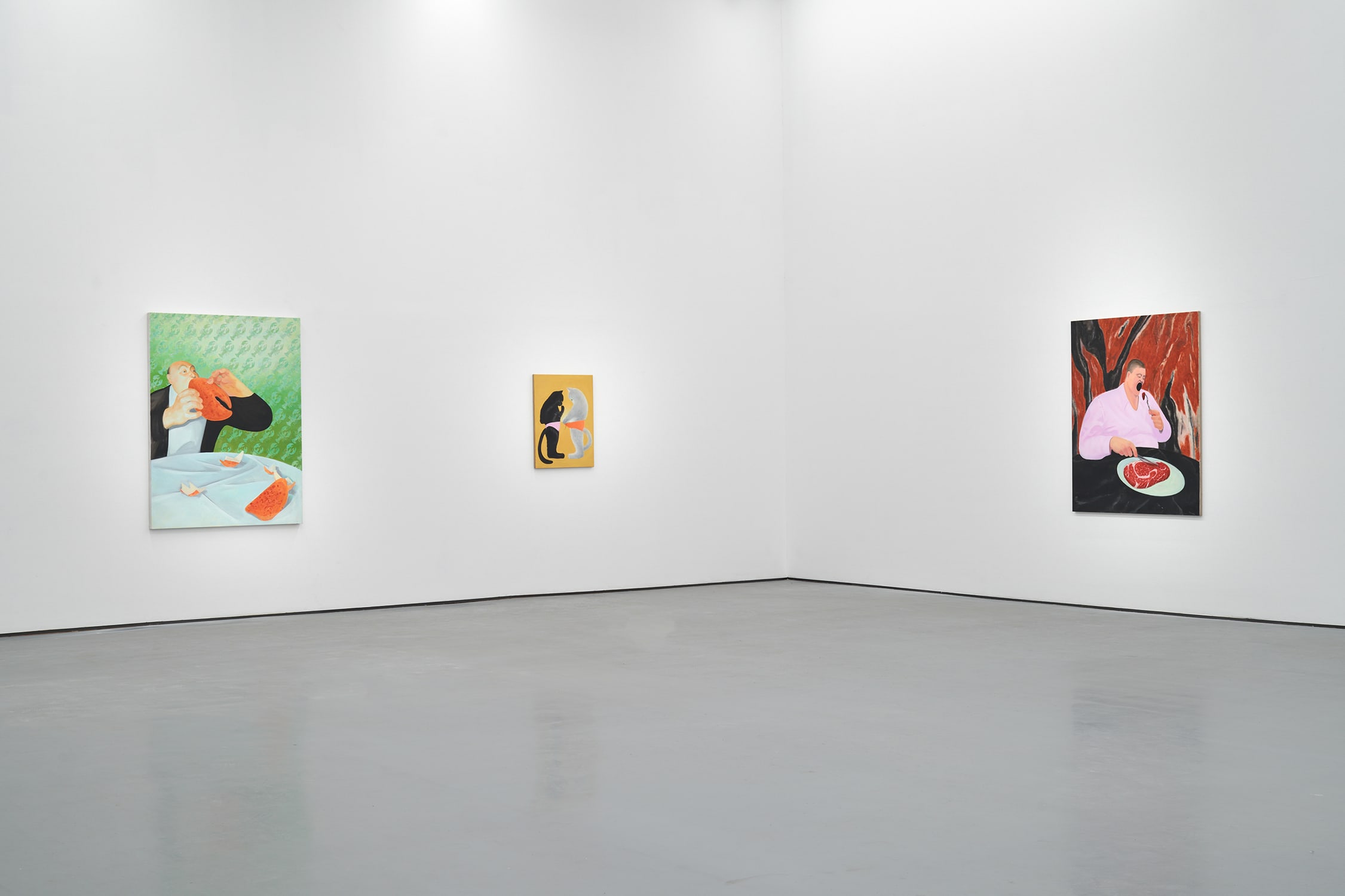
Wang Xiaoqu, ‘Open Stone Gate’
AIKE, Shanghai
Through April 18, 2021
In Wang Xiaoqu’s painting Hole (2020), a large man devours a raw steak, the slab of meat on his plate reflecting the marbled pattern on the wall behind him. In Shelf (2020), another large man chows down on lobster, the same shellfish adorning the green wallpaper in the background. Such iconographies and textures are used by Wang (b. 1987) as a means to evoke humans’ desires, greed, and opportunistic natures, as well as the social impact of China’s economic reforms in the 1990s. She focuses on figures vacationing and living the high life, underscoring the effects of her country’s decision to dismantle state-owned businesses in favor of the market economy. The title of the show itself is taken from an ancient Chinese fable in which a fisherman meets his demise in his greedy pursuit of fortune.
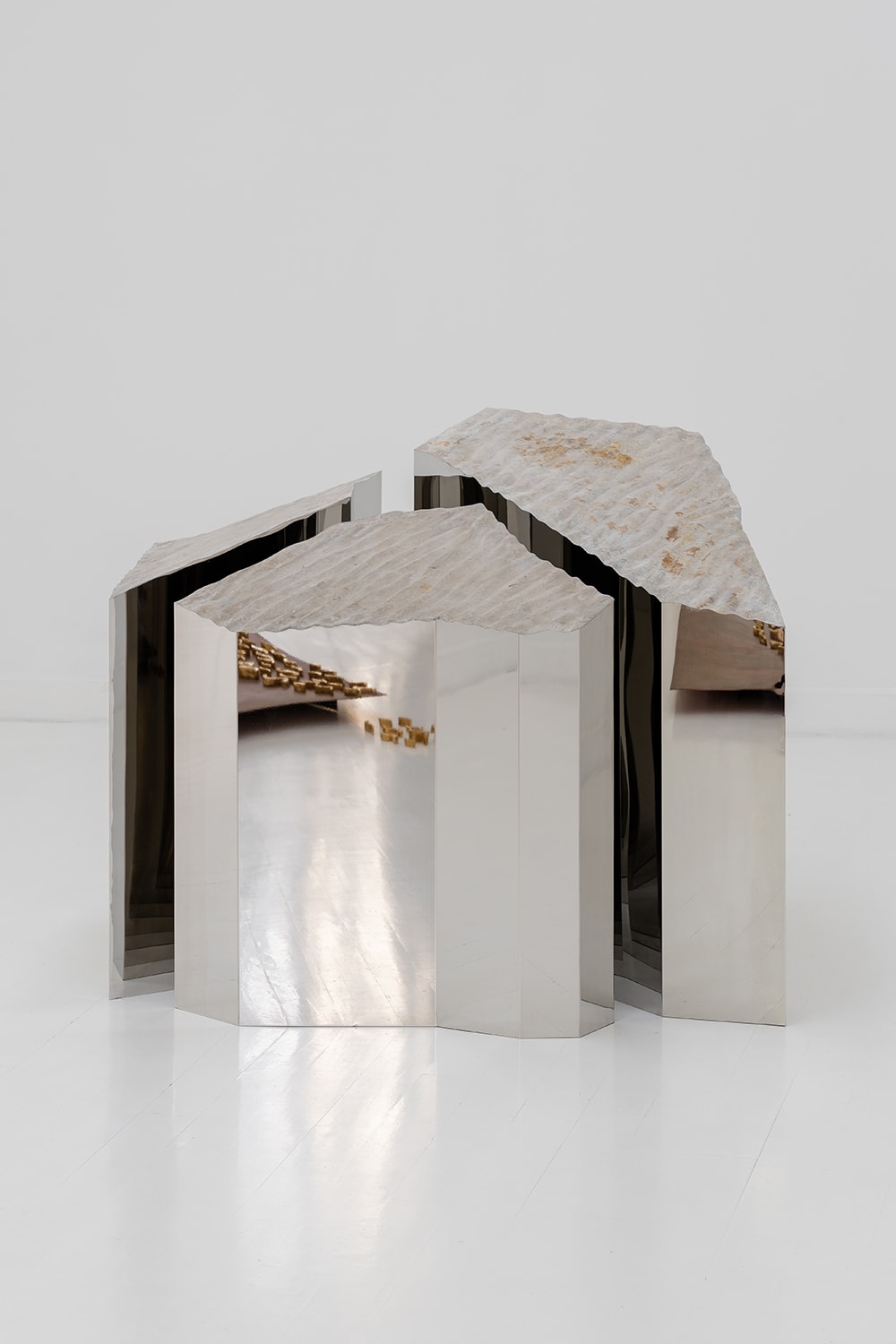
Alice Wang
Capsule Shanghai
Through May 8, 2021
In her artistic practice, Alice Wang (b. 1983) explores the fusion of the rational and subjective aspects of consciousness – a theme which, in this exhibition, is applied to our understanding of both land and space. Sculptures take the form of fossils from the Jurassic period found in Eastern Europe cast in stainless steel, as well as iron meteorites found in the Egyptian desert. The video Pyramids and Parabolas II (2021) revolves around the Crab Pulsar, a relatively young neuron star and one of very few pulsars to have been identified by the human eye. Elsewhere in the show, a table displays a constellation of a prism, air plants, fluorescent pink thread arranged in an isometric grid, handmade white-gold tiles, and a Crooks radiometer. Each of these pieces are united through a recurring, reflexive component: that of the mirror. With a background in both art and science, Wang never loses sight of the human connection to and perception of the universe.
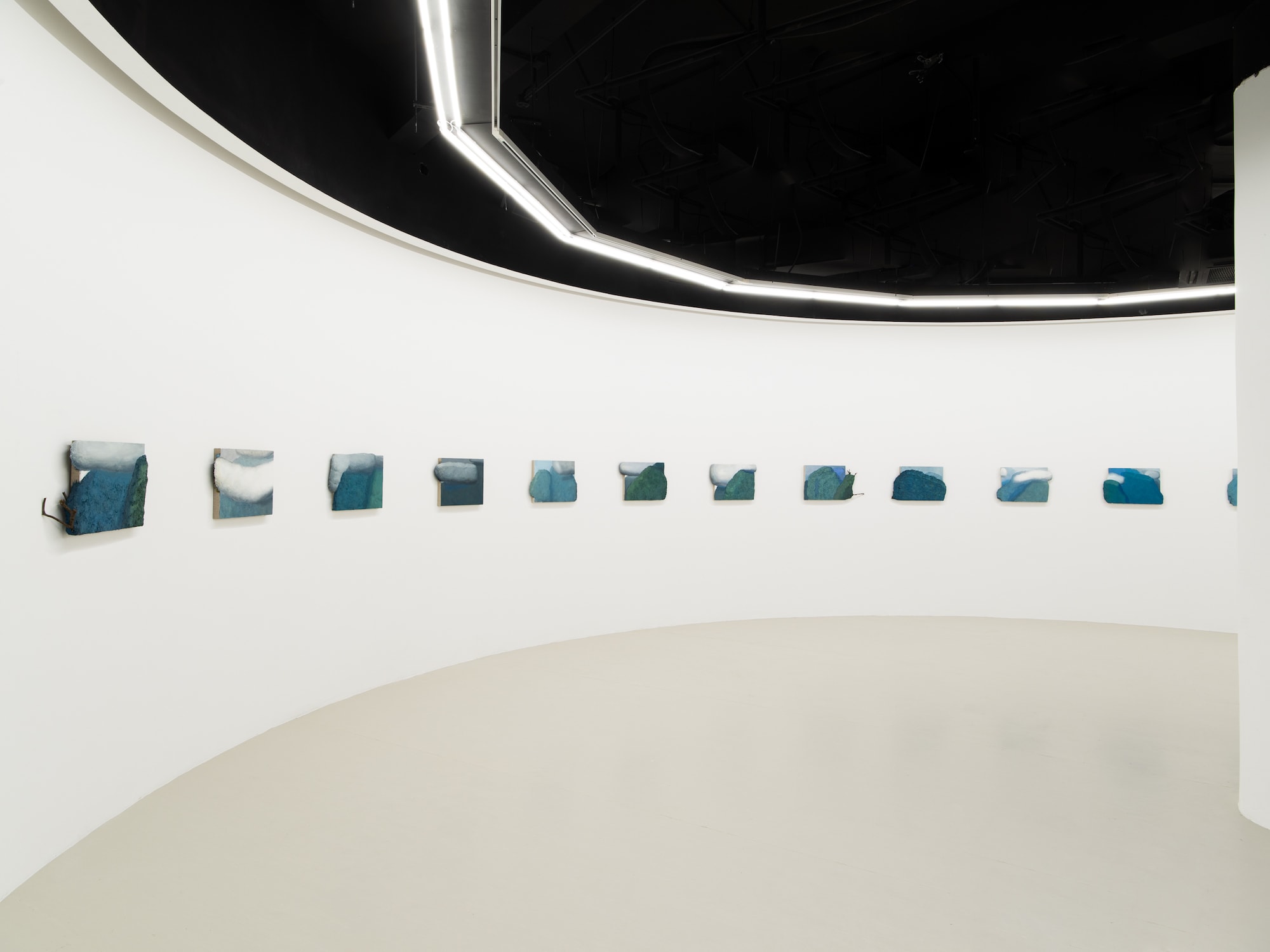
Guo Haiqiang, ‘Emerging from the Mountains’
Don Gallery, Shanghai
Through April 30, 2021
In Guo Haiqiang’s first solo exhibition in Shanghai, his abstract landscapes present a panoramic view of the changing seasons. The artist paints on small-scale canvases during bike trips through the Qinling Mountains, near his hometown of Xi’an, and titles each of them with the date it was created – a nod, perhaps, to On Kawara’s ‘Today’ paintings (1966–2014). In his newest works, however, Guo (b. 1980) goes beyond painterly gestures, turning each canvas into an assemblage once he returns to the studio by embedding objects like tree branches, metal wires, and hemp fibers. This new approach creates a tension between the front and back sides of a work, a technique that resonates with the principles of traditional Chinese painting. The front is rooted in reality, the back an illusion.
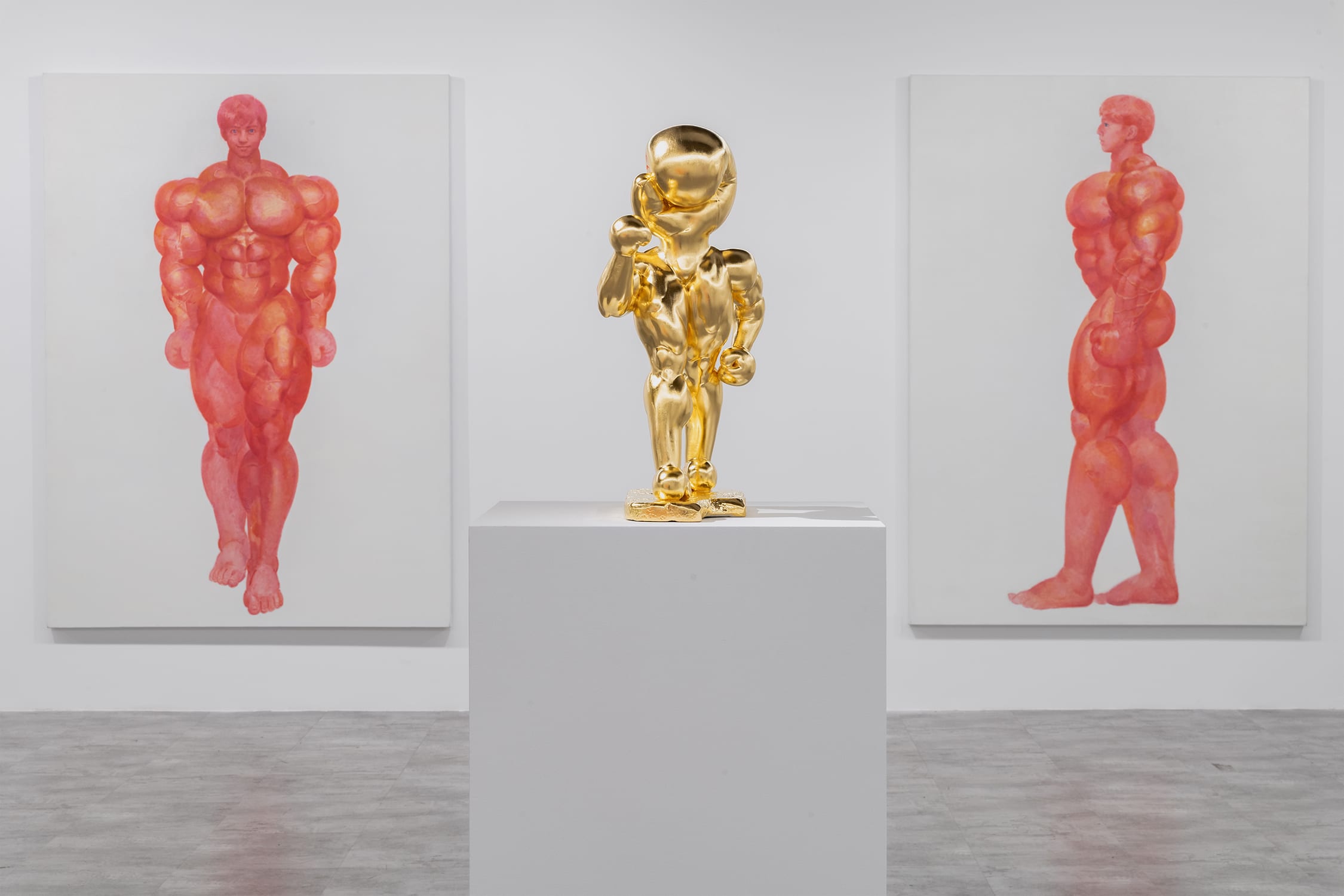
Shang Liang, ‘Mortal at the Helm’
MadeIn Gallery, Shanghai
Through April 30, 2021
Shang Liang (b. 1981) has become known for her sculptures and paintings of superhuman forms with exaggerated, bulging muscles. In her series ‘Boxing Man’, the heads, feet, and hands of such figures are replaced with boxing gloves, while in the series ‘Sofa Man’, the figures morph into couches. Both series obliterate any sense of individual identity, alluding to the contemporary state of anonymity as a means of survival. In this exhibition, works from these two series are accompanied by those from a third, ‘Good Hunter’, in which Shang places innocent, childlike heads atop bodybuilder physiques. Seen together, her paintings and sculptures speak to the absurdity of idealized body images and our, as mere mortals, attempt to grasp, influence, and shape our world.
Fiona He is a writer, a translator, and curator of the group exhibition 'House of Perception', currently on view at Antenna Space, Shanghai.
Top image: Hu Jieming, Green No. 4 (detail), 2020, from the series ‘The Things’. Pigment inkjet print, 53.4 x 80 cm. © Hu Jieming, courtesy of the artist and Magician Space, Beijing.

